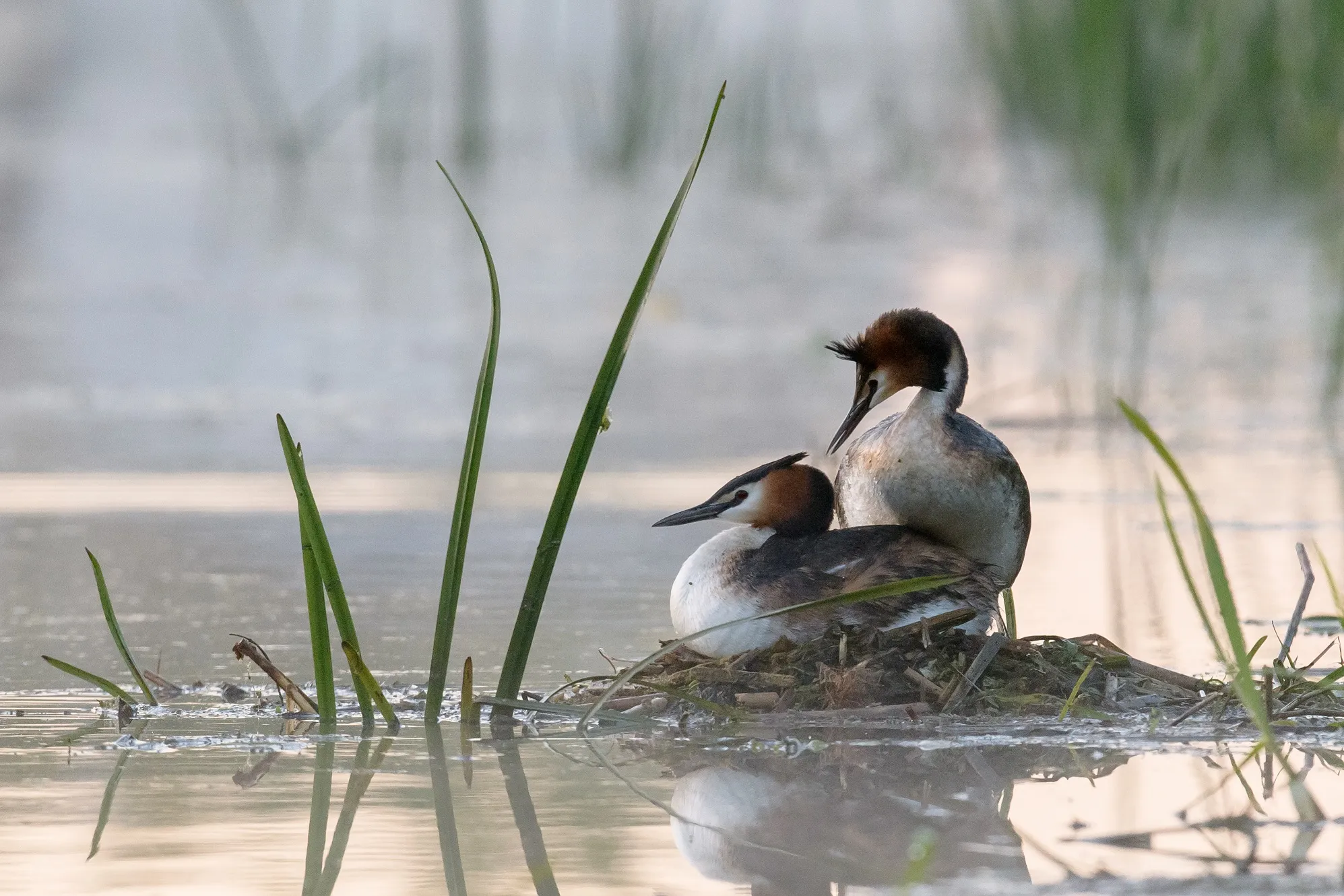
The mixed flocks of songbirds feeding in groups to stay safe from predators through the cold winter months start to disperse, as the urge to pair up and protect territories grows stronger. Birdsong takes on much more urgency after the quieter, colder months of feeding and roosting.
Blue Tits may be found chipping away the entrance hole and testing the integrity of a nest box, Long-tailed Tits will already be collecting moss to create a cosy dome nest and you may well have already noted a Woodpigeon precariously balancing a platform of sticks ready for a new year of nesting. Many of us will be familiar with the nesting activities of Blue Tits, which are found throughout the UK and are the most common bird to take up residence in a nest box.
We also have nostalgic familiarity with owls nesting in tree holes, thanks partly to A.A. Milne, who famously depicted Owl (an Eagle-Owl) living in a hole in a tree. However, this spring I thought it would be interesting to share some perhaps lesser-known behaviours of UK nesters as they embark on their journey through the breeding season.
Knowing what you’re looking at
The nesting season begins with courtship behaviours. These behaviours show that a bird is ready to mate and provides the opportunity to assess prospective partners. These courtship behaviours should not be confused with territorial displays, which are how a bird defends its territory. Nesting is a huge time and energy investment so it is important that birds select the best mate and secure their territory to ensure enough resources, such as food, are available for raising young.
Great Crested Grebes are an incredible example of how exciting mating and territorial behaviour can be. Whilst pairs will choose one another on their wintering grounds, when they return to the nesting territories their majestic and eye-catching dancing and calling builds strength in their relationship and sends the message to other Great Crested Grebes that the territory is theirs.
At the opposite end of the ‘majestic scale’, Dunnocks are small brown birds, often overlooked as they scurry along the bottom of hedges. Their courtship and mating behaviour can be rather intriguing and quite different to that of other species you may find in your garden.
Dunnock are one of few British birds where both males and females have their own territory; which lends itself to their variable mating systems. Females often breed with two or more males, but depending on the sex ratio in a population and the overlap of territories they can be monogamous, polygynous or polygynandrous.
Females can end up raising broods with young from multiple males and males can be raising broods by multiple females; the potential stories give soap operas a run for their money!
Nesting: what to expect
Nest building is something you may expect birds to do high up in trees and deep in bushes, whether it is a Blackbird nest nestled in foliage or a Blue Tit nest box imitating a hole in a tree trunk. However, nests can be discovered in all sorts of locations. Did you know that many warblers, such as Grasshopper Warbler, Willow Warbler and Wood Warbler primarily nest in tussocks of grass?
Some waders such as Lapwings also nest on the ground, but while a Lapwing’s nest is exposed and reasonably easy to spot, a warbler can be very well hidden in the grass. More commonly known species such as Robin can also nest on the ground in grass tussocks, so make sure to watch your step while exploring the countryside in the spring and summer months!
In fact, Robins are one of the most versatile species when it comes to nesting locations. From grass tussocks to the more classic ivy, they are regularly reported nesting inside car engines, boots left in the shed, tin cans and kettles – so be careful with what you leave in the garden unattended!
When it comes to egg laying, Cuckoos skip the nest building stage altogether and rely on the hard work of other birds to not only build the nest but to raise their young to fledging. Species such as Meadow Pipit, Dunnock and Pied Wagtail can be the targets of Cuckoos, with the Cuckoo chick ejecting the host species’ eggs from the nest to lay their own. The young Cuckoo can grow to be more than double the size of the parent bird feeding them!
The Goldcrest holds the record for the UK’s smallest eggs. At just 10 mm by 14 mm, Goldcrest females lay 7-10 eggs inside their tiny soft nest.
Feeding and fledging
Different birds feed their young in different ways with different foods. Around two days before Woodpigeon young hatch, the adult birds start to store food in a sac in part of the digestive system near the throat, called the crop, to produce crop milk (also known as pigeon milk). Crop milk is rich in protein, minerals, fats and antibodies.
The parent birds feed the young this highly nutritious milk until they are around 10 days old, after which the adults will start to add grass and seeds to the mix. The young fledge the nest at around 33 days days old, by which time they will be eating a normal adult diet.
Taking a leap of faith and fledging the nest can be the most challenging moment of a young bird’s life, with fledglings often being coaxed by parents to take their first leap and test the strength of their wings. Not all birds actually ‘fledge’ when they leave the nest. With species such as Mallard, the young birds will stay with their parents for several weeks and are only considered fledged once they are able to leave the parents and fend for themselves.
Guillemot chicks are much the same, but rather than the mini leap of a Mallard chick from nest platform to river the Guillemot chick, whilst still tiny and fluffy at about 23 days old, must take a running leap off the side of a cliff to splash into the cold sea below. The young will then be cared for by the male, teaching them to fish and survive the harsh conditions until they are able to fly.
Helping out with nest boxes
Many UK species make use of nest boxes, allowing us to provide a space for birds to nest when a site might not otherwise be available. These may be particularly beneficial in urban and suburban areas where there aren’t the number of trees and nest cavities available, but we can also get value from nest boxes by monitoring the activity of the birds using them.
- Did you know that a nest box placed under a bridge provides a nest site for a Dipper and even seabirds such as Storm Petrels and Black Guillemots will take to nest boxes?
Building, buying and placing nest boxes
For information on building and placing nest boxes, visit our nest box guidance pages.
- We also highly recommend visiting our partner, Vine House Farm, when buying high-quality nest boxes, bird houses, foods, feeders and more.
Sharing your observations with BTO
Observing and monitoring nesting birds is how we are able to learn so much about them, and these data are vital for identifying the pinch points in species’ life cycles, and developing targeted conservation action where it’s most needed and likely to be effective.
If you have a nest box in your garden, notice nesting behaviour of any species, or are interested in finding out more about monitoring nesting birds then please visit our nest monitoring pages.
